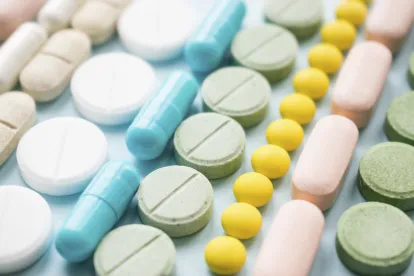On February 6, 2024, the Federal Trade Commission (“FTC”) commented in support of what would be a historic expansion of government march-in rights under the Bayh-Dole Act in response to the release of the National Institute of Standards and Technology’s (NIST’s) Draft Guidance Framework for Considering the Exercise of March-In Rights (Proposed Framework) in early December 2023.
Last week’s release by the FTC of its feedback on NIST’s Draft Guidance is now the second instance within two months of a U.S. government agency advocating for a landmark shift in the use of march-in rights by the U.S. government. The FTC comment follows the publication of NIST’s Draft Guidance on December 8, 2023, the first clear U.S. government statement arguing that march-in rights can properly and should be used to control drug prices. The FTC comment essentially seconds the NIST position and was timely made to be considered by NIST and the Interagency Working Group for Bayh-Dole in finalizing a framework for government agencies to decide whether and when to exercise government march-in rights established in Bayh-Dole.1
To understand the significance of the NIST Draft Guidance and FTC comment, a short review of the history of Bayh-Dole is helpful. U.S. federal government grants have long provided billions of dollars of support each year for research that often leads to the development and commercialization of drugs and diagnostics. Put differently, drug discovery is the result of an extended process that typically starts with grant-funded basic research at academic and other research institutions and ends once a commercial entity, such as a big pharma company, completes the longer, riskier and much more expensive task of bringing the drug to market by undertaking, among other imperatives, the pre-clinical and clinical research necessary to support regulatory approval for marketing a drug. The Bayh-Dole Act was passed four decades ago with a goal of providing companies with incentives to undertake the enormous investment and risk to bring federally funded inventions to market. To that end, Bayh-Dole established that federal grantees, and not the US federal government, could hold and market rights to inventions developed with federal support, subject to certain rights that the U.S. government would retain. Among these, Bayh-Dole provided the U.S. government with march-in rights that could be exercised under specific circumstances. Until relatively recently, however, the specific circumstances necessary to justify the exercise by the government of its march-in rights were not widely understood or interpreted to encompass the purpose of controlling drug prices. Moreover, certain patient advocacy groups have repeatedly tried to petition the U.S. government (National Institutes of Health) to exercise its march-in rights to control the price of certain cancer drugs, but the government has consistently declined, stating that price control is not a proper basis for doing so. Thus, both the NIST Draft Guidance and now the FTC’s position as set forth in its comment run counter to the position that the U.S. government has effectively held since 1980, when Bayh-Dole was first enacted.2
The FTC comment begins by characterizing Congress’ original intention in enacting the Bayh-Dole Act. According to the FTC, Bayh-Dole was originally designed to facilitate collaboration between private and federal entities to benefit the public by ensuring the availability, use and commercialization of taxpayer-funded inventions. The FTC considers march-in rights as a trade-off, allowing private entities receiving federal funding to retain ownership of taxpayer-funded inventions, subject to the caveat that government agencies may “march in” where inventions are subject to nonuse or unreasonable use in accordance with the requirements laid out in the Act.3 The FTC comment applauds the NIST Proposed Framework as “mark[ing] an important turning point in recognizing and operationalizing the longstanding, but previously unused authority of the federal government to ensure taxpayer-funded inventions are accessible and affordable to the public.”4
The FTC then addresses its interest as an enforcement agency to protect the public from deceptive trade practices and unfair competition. In pursuit of this goal, the FTC has taken significant action to curb anticompetitive conduct and cites recent instances where it stepped in to counter inflated prescription drug prices.5 The FTC also mentions its heightened scrutiny of pharmacy benefit managers and its efforts to examine their impact on access and affordability of prescription drugs and to accordingly advise policymakers on reforming the pharmaceutical industry.
The FTC comment then raises the exponential increase in patents following the passage of the Bayh-Dole Act as evidence that its enactment directly encouraged investment in innovation. The FTC asserts that march-in rights are “powerful leverage,” the mere threat of which has “yielded tangible public benefits” amid certain health crises.6
The FTC comment next discusses the billions of dollars of taxpayer investment in research and development of pharmaceutical products and the considerable amount of “breakthroughs” in drug development elicited by these funds.7 Given this, the FTC implores affordable access to prescription drugs for Americans. It opines that the pharmaceutical market, in particular, is characterized by “high barriers to entry” (i.e., intellectual property rights, regulatory approvals, and research and development costs) that warrant march-in rights in instances where prices are unreasonably inflated due to limited or nonexistent competition.8 The FTC acknowledges the claims made by industry members that drug prices are necessarily raised in order to fund further research and development of new drugs, but counters these claims with allegations and evidence that “the fourteen leading drug companies’ investment in research and development has fallen relative to their profits, stock buybacks, and dividends.”9 The comment then points to examples of dramatic price increases for drugs, which it claims are not supported by increased R&D costs but rather by a lack of competition and private entities’ thirst for profit.10
The FTC concludes its comment by providing other suggestions for promoting licensing and access to taxpayer-funded patents. It recommends that agencies work together to address the “patent thicket” phenomenon where pharmaceutical companies use large patent portfolios for single treatments as a tactic to ward off litigation and invalidation.11
Though the position of the U.S. government as reflected in the NIST Draft Guidance and by the FTC comment would represent a marked and historical shift, it may be unsurprising to many that the FTC would adopt such a position under the leadership of Secretary Raimondo. Moreover, the Biden administration has already prioritized drug price controls in its agenda, including the prescription drug provisions in the Inflation Reduction Act of 2022, which lower prescription drug costs for Medicare recipients. Strong bipartisan and public support exists for further government action to address high drug prices in the U.S. and may well provide the incentive needed for such a significant change in government policy to take hold despite four decades of policy to the contrary. Stay tuned for further updates from NIST and the Interagency Working Group for Bayh-Dole as they become available.
Footnotes
[1] Comment of the U.S. Federal Trade Commission (Feb. 6, 2024).
[2] See R. McFadyen and T. Nealey, Can Old Bayh-Dole Be Taught New Tricks? The Patent Lawyer, May/June 2022: 91.
[3] See 35 U.S.C. § 203.
[4] Comment of the U.S. Federal Trade Commission, at 3 (Feb. 6, 2024).
[5] Id. at 5.
[6] Id. at 10 (“For example, the government leveraged the threat of march-in to persuade Bayer to ramp up production of patented anthrax antibiotics after the September 11 attacks. Similarly, the government convinced Roche to allow generic manufacturing of Tamiflu during the 2005 avian flu pandemic, in significant part due to the threat of march in.”).
[7] Id. at 11.
[8] Id.
[9] Id. at 13.
[10] See id. at 14.
[11] Id. at 15.





 />i
/>i

